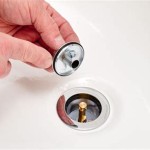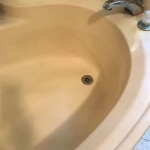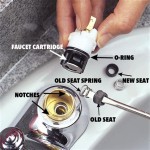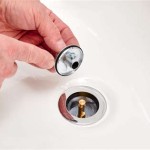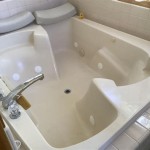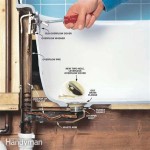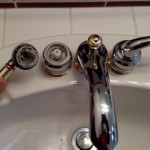How to Make a Portable Bathtub Drain
A portable bathtub drain offers a practical solution for individuals who use inflatable or portable bathtubs, especially in locations without pre-existing drainage systems. This article details a method for constructing a functional and reliable portable drain that can effectively remove water without causing spills or water damage. The process involves carefully selecting materials, understanding basic plumbing principles, and implementing a straightforward assembly procedure.
Selecting the Appropriate Materials
The success of a portable bathtub drain hinges on the quality and compatibility of the materials used. The primary components include a flexible hose, a connector suitable for attaching to the bathtub's drain outlet, a submersible pump, and a power source for the pump. Each of these elements needs to be considered in detail.
The flexible hose’s diameter should match the outlet size of the submersible pump. Materials like PVC or reinforced vinyl are suitable choices as they provide flexibility and durability. The length of the hose will depend on the distance between the bathtub and the intended drainage point (e.g., a sink, toilet, or external drain). It is prudent to overestimate the required length to allow for maneuvering and avoid straining the connections.
The connector is a crucial component, as it forms the interface between the bathtub's drain and the flexible hose. Options include rubber couplings, threaded adapters, and custom-made fixtures. The most suitable connector will depend on the specific design of the bathtub drain. It is essential to ensure a watertight seal to prevent leaks during drainage. If the bathtub drain is a simple opening, a tightly fitting rubber stopper with a hose barb fitting inserted through it can be an effective solution. Alternatively, a universal sink drain adapter, often found in hardware stores, may be adaptable with minor modifications.
A submersible pump is necessary to actively remove water from the bathtub. These pumps are designed to operate while submerged in water and are typically powered by electricity. Key considerations when selecting a pump include its flow rate (gallons per minute or liters per minute), the maximum head height (the vertical distance the pump can lift the water), and its power requirements. A pump with a flow rate of at least 5 gallons per minute is generally sufficient for draining a portable bathtub in a reasonable timeframe. The maximum head height should be greater than the vertical distance between the bathtub and the drainage point. Ensure the pump is appropriately sized for the voltage and amperage available at the power source.
A power source is required to operate the submersible pump. Most submersible pumps are designed to operate on standard household voltage (120V in North America, 220-240V in Europe and other regions). A grounded electrical outlet is recommended to ensure safety. If an outlet is not readily available, an extension cord rated for outdoor use and capable of handling the pump's amperage is necessary. Alternatively, battery-powered submersible pumps are available, offering greater portability, but they may have a lower flow rate and shorter operating time.
Assembling the Portable Drain System
The assembly process involves connecting the chosen components in a way that creates a secure and leak-proof drainage system. It requires careful attention to detail and adherence to basic plumbing practices.
First, the connector needs to be securely attached to the bathtub's drain outlet. Depending on the type of connector used, this may involve tightening screws, applying pipe sealant, or employing a clamping mechanism. The goal is to create a watertight seal that can withstand the pressure of the water being drained. If using a rubber stopper with a hose barb, ensure the stopper fits snugly in the bathtub drain and the barb is securely fastened to the stopper. Apply silicone sealant around the barb where it passes through the stopper to create a watertight seal.
Next, one end of the flexible hose needs to be connected to the connector attached to the bathtub. Similarly, this connection must be watertight. Depending on the specific setup, hose clamps, threaded fittings, or specialized couplings can be used to secure the hose to the connector. Hose clamps, tightened with a screwdriver, provide a reliable and adjustable method for securing the hose. Ensure the clamp is positioned correctly over the connection point and tightened sufficiently to prevent leaks without damaging the hose.
The other end of the flexible hose needs to be connected to the outlet of the submersible pump. This connection should also be watertight and secure. Typically, the pump will have a threaded or barbed outlet designed to accept a hose connection. Use appropriate fittings and clamps to ensure a firm and leak-proof seal. Submersible pumps often come with various adapters to accommodate different hose sizes. Select the adapter that best matches the diameter of the flexible hose.
Before using the portable drain system, it is imperative to test it for leaks. Fill the bathtub with a small amount of water and activate the submersible pump. Carefully inspect all connections for any signs of leakage. If leaks are detected, tighten the connections, apply additional sealant, or replace any faulty components. Repeat the testing process until all leaks are eliminated.
Implementing Safety Measures and Drainage Practices
Safe operation and responsible drainage practices are essential when using a portable bathtub drain. Ignoring these considerations can lead to potential hazards and environmental concerns.
Electrical safety is paramount when using a submersible pump. Ensure the pump is properly grounded and connected to a grounded electrical outlet. Avoid using damaged extension cords or operating the pump in areas with standing water. If using a battery-powered pump, follow the manufacturer's instructions for charging and storing the battery. Never submerge the power cord or any electrical connections in water.
The submersible pump should be placed inside the bathtub, ensuring it is fully submerged in water before being activated. This prevents the pump from running dry, which can damage the motor. Regularly inspect the pump for any signs of wear or damage, such as cracks in the housing or frayed power cords. Replace any damaged components immediately.
Consider the location where the water will be drained. Avoid draining water into areas that could cause flooding or water damage. Ideally, the water should be drained into a sink, toilet, or designated drain. If draining into a toilet, be mindful of the toilet's capacity and avoid overflowing it. If draining outdoors, ensure the water is directed away from buildings and sensitive landscaping. Consider the environmental impact of the water being drained. Avoid draining water containing harsh chemicals or cleaning agents into the environment.
When the draining process is complete, turn off the submersible pump and disconnect it from the power source. Remove the pump from the bathtub and allow it to drain completely. Disconnect the flexible hose and connector, and store all components in a dry and safe place. Regularly clean the submersible pump and hose to prevent the buildup of mineral deposits and debris. This will help to maintain the pump's efficiency and prolong its lifespan.
Regularly inspect the hose for any signs of wear and tear or damage. Replace cracked or damaged hoses to prevent leaks and ensure efficient water removal. Consider adding a strainer or filter to the intake of the submersible pump to prevent debris from clogging the pump. This is especially important if the water contains hair, soap scum, or other particles.
In addition to these practical considerations, it is crucial to familiarize oneself with local regulations regarding water disposal. Some municipalities may have specific guidelines or restrictions on where and how wastewater can be discharged. Adhering to these regulations helps to protect the environment and avoid potential fines or penalties.
By carefully selecting materials, assembling the drain system correctly, and implementing appropriate safety measures and drainage practices, a functional and reliable portable bathtub drain can be created. This provides a convenient and efficient solution for draining portable bathtubs in various settings, ensuring proper water management and preventing potential hazards.
The process detailed above offers a general guideline, and specific modifications may be required based on the particular design of the portable bathtub and the available drainage options. Flexibility and adaptability are crucial to achieving a successful outcome.

How To Install A Freestanding Tub

Plumbing How To Drain A Free Standing Bathtub Home Improvement Stack Exchange

I Bought A Portable Bathtub From

Buy Foldable 135cm Large Massage Bathtub Portable Bath Tub With Drain For Mydeal

Portable Bathtub Sold On Temu New Zealand

Foldable Bathtub Pvc Rectangular Bath Tub For 1 3 People Drain System Built In Shelves Easy Clean Lightweight Design Summer Holidays

Portable Bathtub Small By Homefilos Japanese Soaking Bath Tub For S

Ez Bathe Inflatable Bath Tubs Portable Bathtub For S

Hurber Folding Bathtub Portable Shower Bath Tub For S Or Kids Efficiently Maintaining Temperature Soaking Blue Whale Pattern

Ez Bathe Inflatable Bath Tubs Portable Bathtub For S
Related Posts


